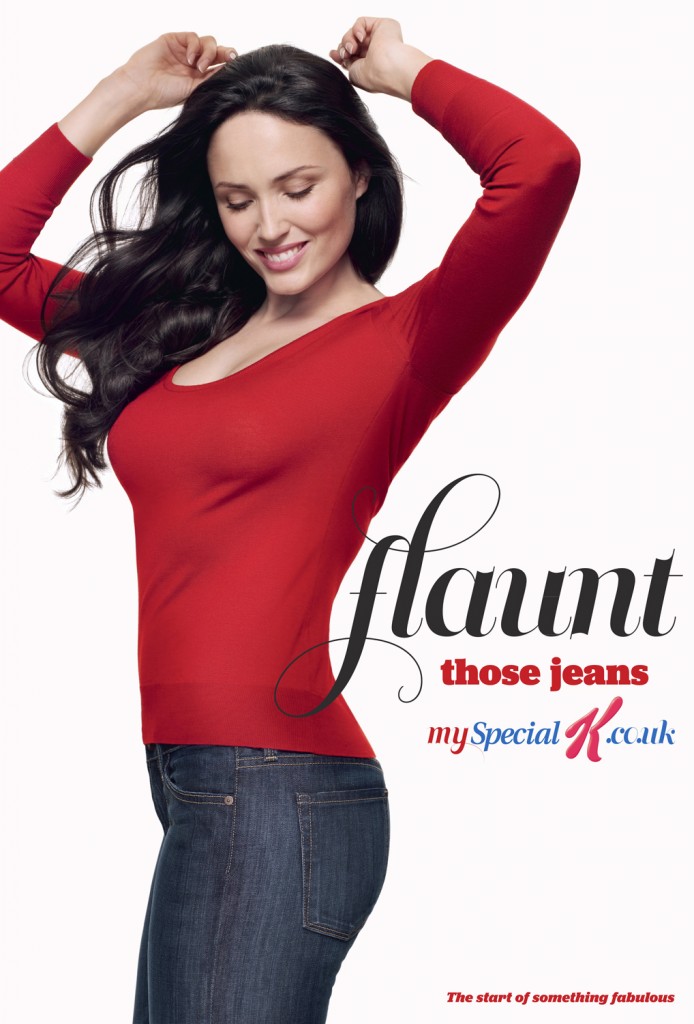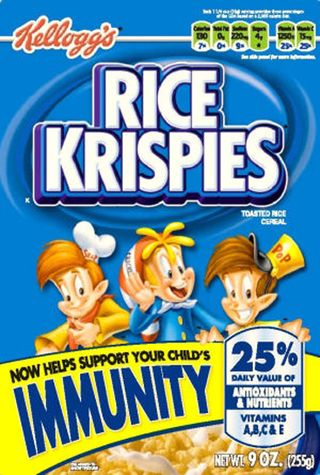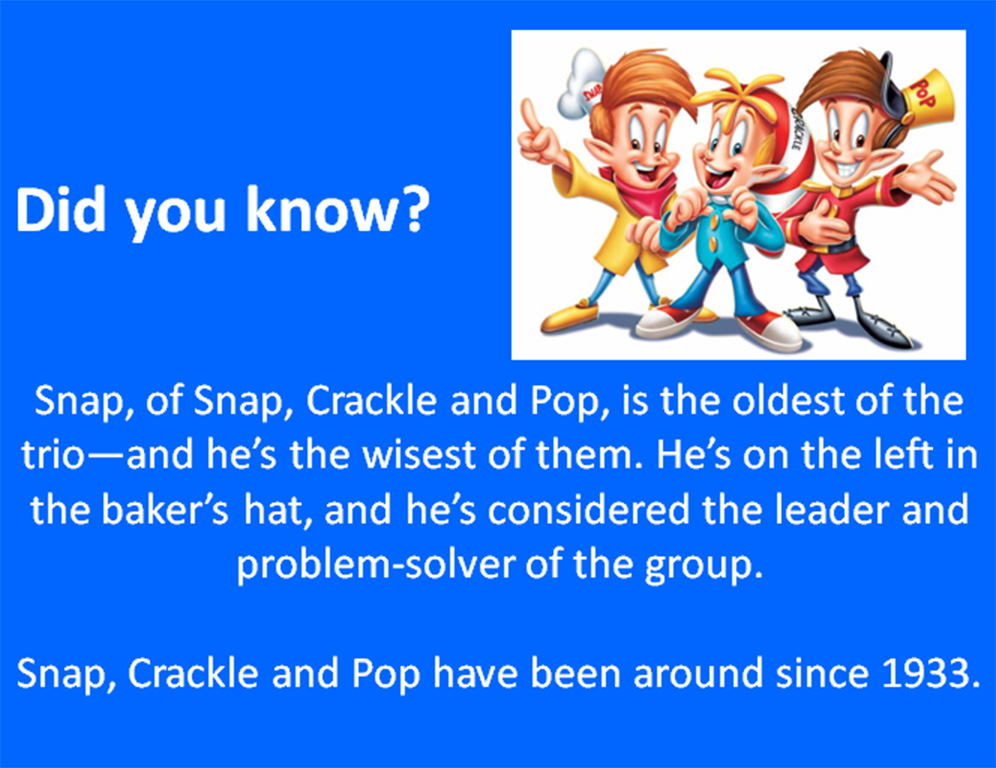Posts Tagged ‘ Kellogg’s ’
UK Watchdog Slams Special K Calorie Count, Bans Ads
July 10th, 2012. By AbiK
 You know that Special K Challenge? That’s the one where you eat a Special K breakfast and lunch, and then have a ‘sensible meal’ for dinner—along with whatever fruits and vegetables you want, and the beverages you ‘normally’ have. And you’re supposed to lose weight…and fit into those jeans you’ve long since busted out of.
You know that Special K Challenge? That’s the one where you eat a Special K breakfast and lunch, and then have a ‘sensible meal’ for dinner—along with whatever fruits and vegetables you want, and the beverages you ‘normally’ have. And you’re supposed to lose weight…and fit into those jeans you’ve long since busted out of.
A twice-a-day Special K diet may help you shed some pounds, but the Advertising Standards Authority (ASA) over in the UK has taken issue with some of Kellogg’s Special K advertising. It seems that some of the Special K advertising has promoted the breakfast cereal as adding only 114 calories per serving to a daily diet—why, that’s a meal with just a few teeny calories over a “100-calorie” snack pack!
Surely, you can’t go wrong on your diet with that.
But, the UK ad watchdog has seen something wrong how the calories are counted in the Special K ads: where’s the milk? And that’s led to a false advertising slap on the wrist.
Seems a number of Brits—and, of course, Americans—eat their cereal with milk. And as such, the UK Special K ads showed women preparing their cereal breakfast by pouring milk into it. Those aforementioned 114 calories don’t account for the milk. And if you add the milk back into the equation, that can boost the calorie count up to anywhere between 200 and 236 calories.
According to a recent report in the Daily Mail (7/4/12), Kellogg’s responded to a complaint the ASA received by stating that the company left out the milk calories because “many customers eat the cereal dry, or with orange juice or yogurt.”
That response, apparently, did not measure up enough for the ASA. The Special K ads have been banned.
Bought any Rice Krispies? There’s a Rice Krispies Class Action Settlement
September 22nd, 2011. By AbiK
 Kellogg’s Rice Krispies—and Cocoa Krispies—cereals are the focus of a class action lawsuit settlement. Granted, the Class Period for this lawsuit isn’t all that long: it’s for Rice Krispies or Cocoa Krispies bought between June 1, 2009 and March 1, 2010. But, as any mom with school-age kids could tell you, between bowls at breakfast and the ever-popular Rice Krispies treats (homemade, of course), there’s a good chance that a lot of folks—including you—are part of the Class for this one.
Kellogg’s Rice Krispies—and Cocoa Krispies—cereals are the focus of a class action lawsuit settlement. Granted, the Class Period for this lawsuit isn’t all that long: it’s for Rice Krispies or Cocoa Krispies bought between June 1, 2009 and March 1, 2010. But, as any mom with school-age kids could tell you, between bowls at breakfast and the ever-popular Rice Krispies treats (homemade, of course), there’s a good chance that a lot of folks—including you—are part of the Class for this one.
So here’s the lowdown on the Kellogg’s Rice Krispies class action settlement…
What is the Kellogg’s Rice Krispies lawsuit about?
False advertising. How? The plaintiff claimed that Kellogg Company made claims about Rice Krispies’ and Cocoa Krispies’ supporting a person’s immunity system (see pic)—without having competent clinical evidence to support the claim. (Personally, I’d be seeking other ways to boost my immunity, but what do I know…). Kellogg denies any wrongdoing, however the company and Class Representatives agreed to settle to avoid the cost of a trial.
Who is part of the Kellogg’s Rice Krispies class action?
Anyone who purchased Rice Krispies or Cocoa Krispies in the US between June 1, 2009 and March 1, 2010 is considered part of the Class.
What will I get from the Rice Krispies settlement?
A settlement fund of $2.5 million has been set up. Claimants will share in the amount left over once attorney fees and an incentive award for Class Representatives have been paid from the settlement fund.
Accordingly, Class Members may then seek reimbursement of $5 per box purchased, up to a maximum of $15 (i.e., 3 boxes) per household. As is typical with class action lawsuits, the actual amount claimant receives will depend on how many valid claims are received for this class action. If valid claims exceed the amount of money available to pay them, then each award will be reduced pro rata.
What do I need to do to be included in the Rice Krispies settlement?
You need to fill out and submit a claim form by November 16, 2011. Proof of purchase is not required (but your honesty is).
For full details on the Kellogg’s Rice Krispies and Cocoa Krispies class action lawsuit, visit www.cerealadvertisingsettlement.com.
Archive by Category
- Accidents (24)
- Airlines (9)
- Asbestos Mesothelioma (262)
- Automotive (25)
- Celebrity (14)
- Class Action (84)
- Complaints/Comments (15)
- Consumer Fraud (84)
- Contest (2)
- Court of Public Opinion (5)
- Crazy Sh*t Lawyers See (61)
- Criminal Law (4)
- Defective Products (111)
- DePuy ASR Hip Recall (2)
- Discrimination (22)
- Drugs/Medical (248)
- Elder Care Abuse (4)
- Emerging Issues (462)
- Employment (54)
- Environment (52)
- Financial (28)
- Food Illness (15)
- Human/Civil Rights (4)
- Insecurities (5)
- Insurance (16)
- Intellectual Property (16)
- Internet/E-commerce (19)
- lawsuits (161)
- Lawyers (20)
- Lawyers Giving Back (43)
- Lex Levity (10)
- Personal Injury (106)
- Pleading Ignorance (53)
- Real Estate (2)
- Recall (6)
- Scam (3)
- Securities (13)
- Settlement (81)
- Tort Reform (2)
- Totally Tortelicious (81)
- Veterans (11)
- Whistleblower (9)